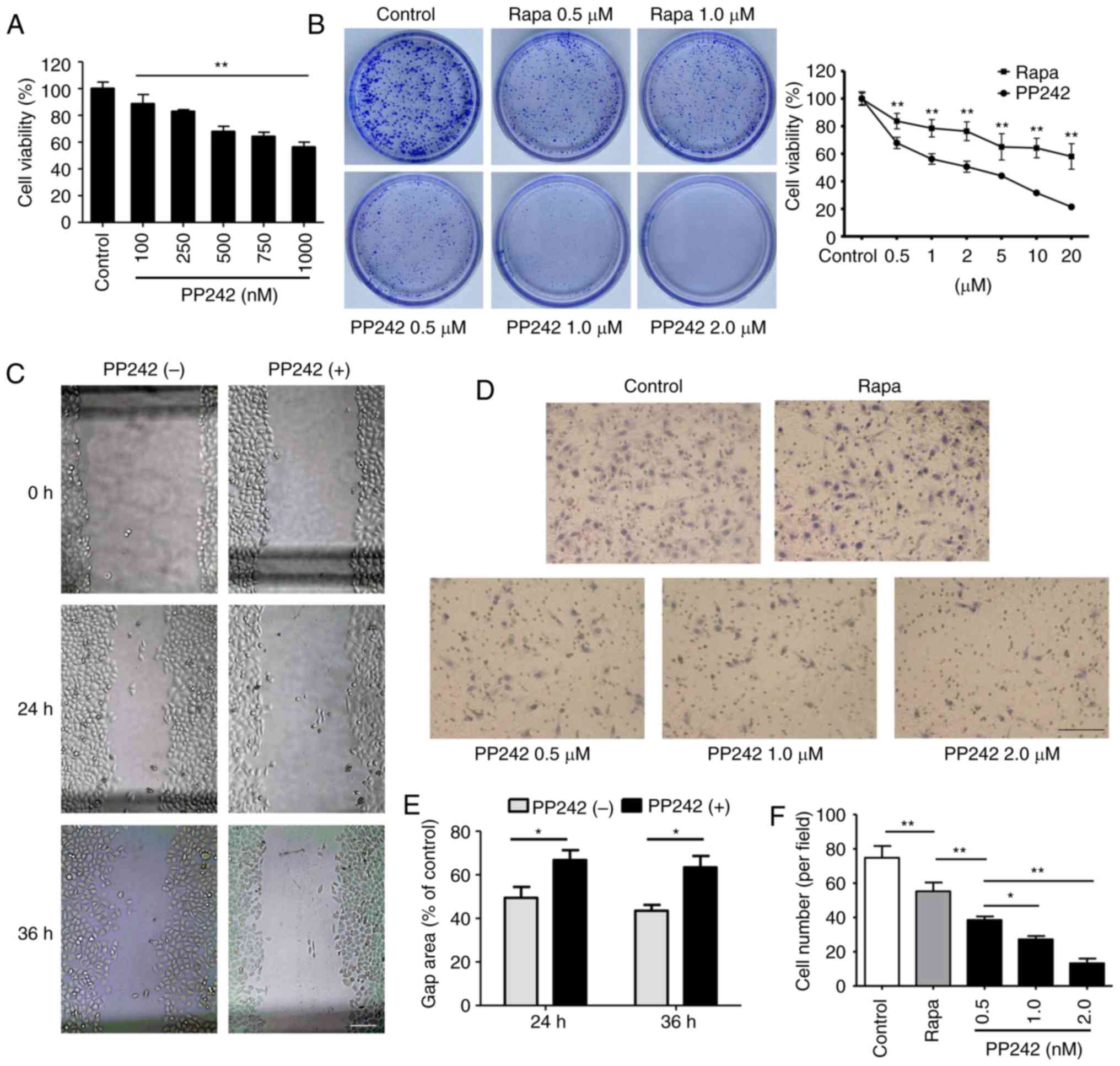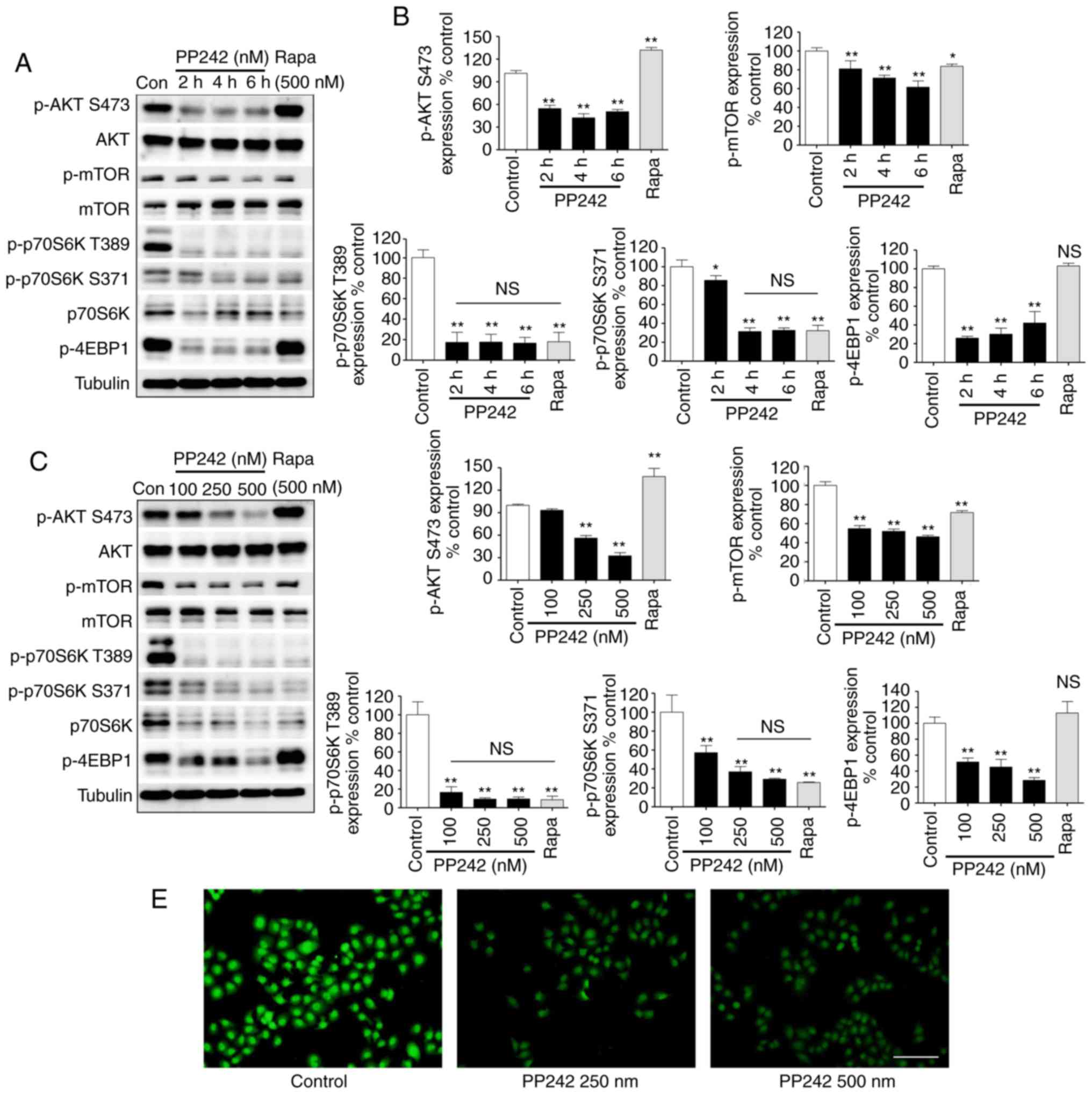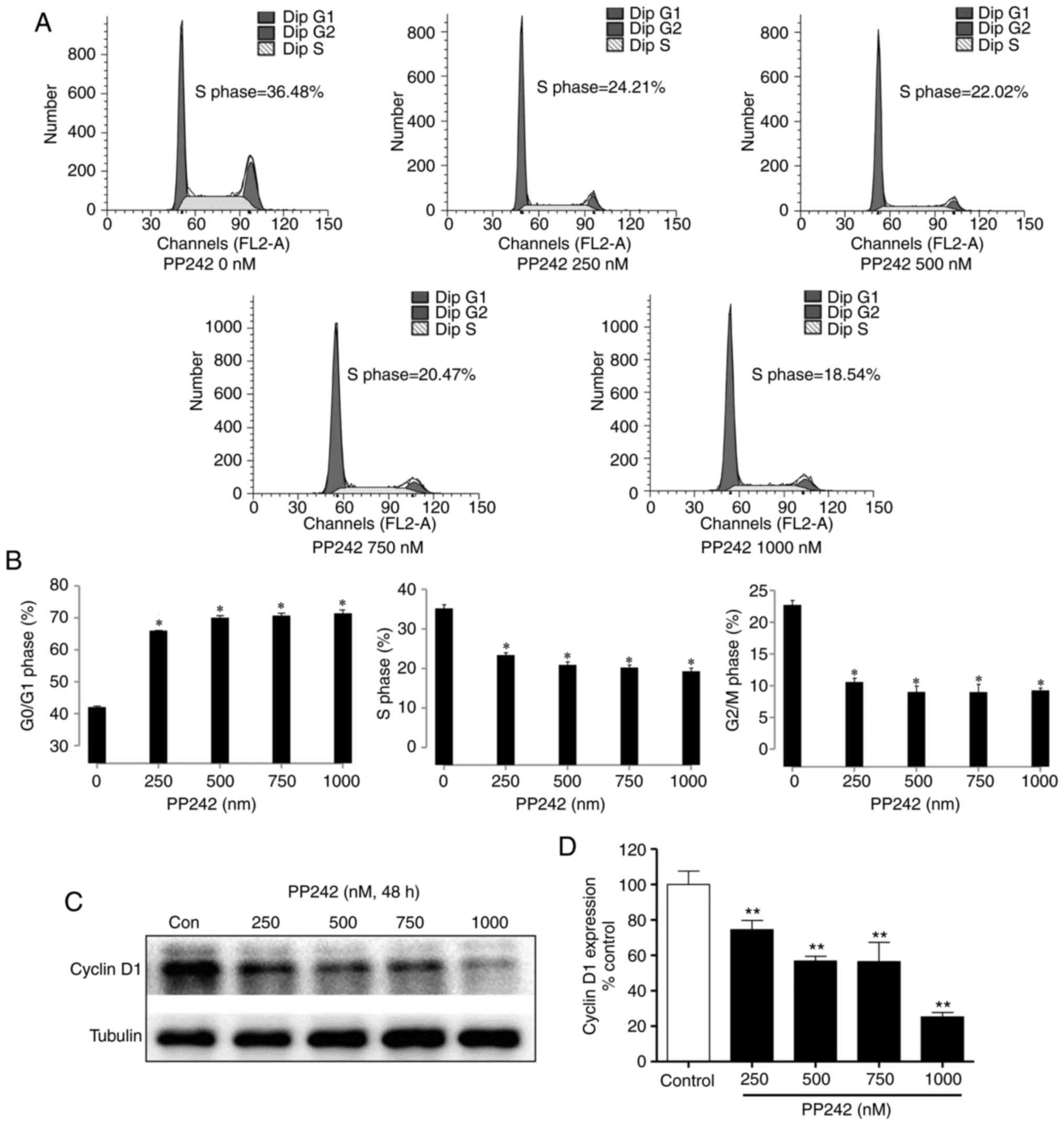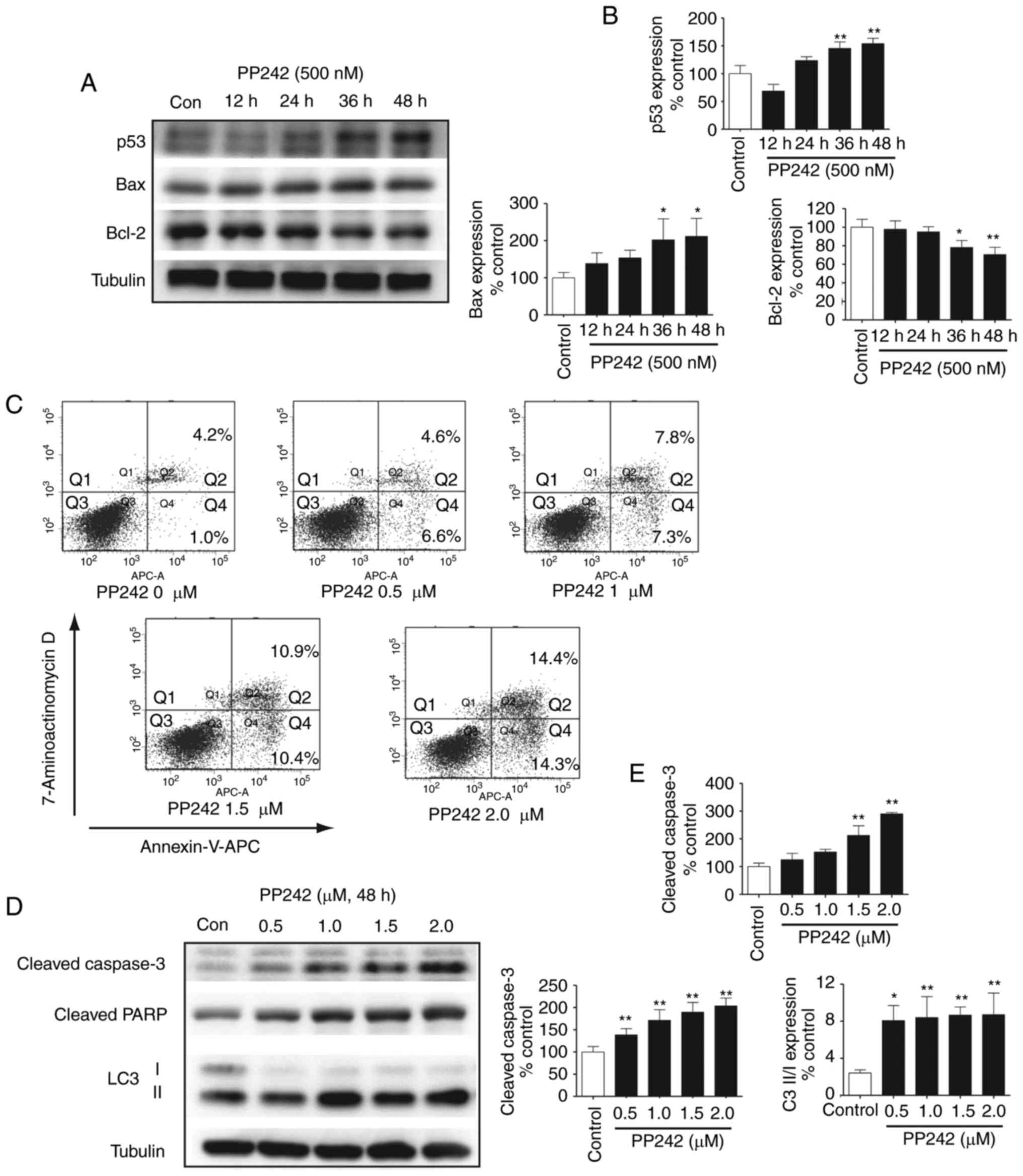|
1
|
Apple DJ, Solomon KD, Tetz MR, Assia EI,
Holland EY, Legler UF, Tsai JC, Castaneda VE, Hoggatt JP and
Kostick AM: Posterior capsule opacification. Surv Ophthalmol.
37:73–116. 1992. View Article : Google Scholar : PubMed/NCBI
|
|
2
|
Wormstone IM, Wang L and Liu CS: Posterior
capsule opacification. Exp Eye Res. 88:257–269. 2009. View Article : Google Scholar
|
|
3
|
Awasthi N, Guo S and Wagner BJ: Posterior
capsular opacification: A problem reduced but not yet eradicated.
Arch Ophthalmol. 127:555–562. 2009. View Article : Google Scholar : PubMed/NCBI
|
|
4
|
Chan E, Mahroo OA and Spalton DJ:
Complications of cataract surgery. Clin Exp Optom. 93:379–389.
2010. View Article : Google Scholar : PubMed/NCBI
|
|
5
|
Nishi O: Influence of intraocular lens
material and design on the development of posterior capsule
opacification. Ophthalmologe. 102:572–578. 2005.In German.
View Article : Google Scholar : PubMed/NCBI
|
|
6
|
Nishi O, Yamamoto N, Nishi K and Nishi Y:
Contact inhibition of migrating lens epithelial cells at the
capsular bend created by a sharp-edged intraocular lens after
cataract surgery. J Cataract Refract Surg. 33:1065–1070. 2007.
View Article : Google Scholar : PubMed/NCBI
|
|
7
|
Apple DJ, Peng Q, Visessook N, Werner L,
Pandey SK, Escobar-Gomez M, Ram J and Auffarth GU: Eradication of
posterior capsule opacification: Documentation of a marked decrease
in Nd:YAG laser posterior capsulotomy rates noted in an analysis of
5416 pseudophakic human eyes obtained postmortem. Ophthalmology.
108:505–518. 2001. View Article : Google Scholar : PubMed/NCBI
|
|
8
|
Javitt JC, Tielsch JM, Canner JK, Kolb MM,
Sommer A and Steinberg EP: National outcomes of cataract
extraction. Increased risk of retinal complications associated with
Nd:YAG laser capsulotomy. The cataract patient outcomes research
team. Ophthalmology. 99:1487–1498. 1992. View Article : Google Scholar : PubMed/NCBI
|
|
9
|
Nibourg LM, Gelens E, Kuijer R, Hooymans
JM, van Kooten TG and Koopmans SA: Prevention of posterior capsular
opacification. Exp Eye Res. 136:100–115. 2015. View Article : Google Scholar : PubMed/NCBI
|
|
10
|
Zoncu R, Efeyan A and Sabatini DM: mTOR:
From growth signal integration to cancer, diabetes and ageing. Nat
Rev Mol Cell Biol. 12:21–35. 2011. View
Article : Google Scholar
|
|
11
|
Guertin DA and Sabatini DM: An expanding
role for mTOR in cancer. Trends Mol Med. 11:353–361. 2005.
View Article : Google Scholar : PubMed/NCBI
|
|
12
|
Cargnello M, Tcherkezian J and Roux PP:
The expanding role of mTOR in cancer cell growth and proliferation.
Mutagenesis. 30:169–176. 2015. View Article : Google Scholar : PubMed/NCBI
|
|
13
|
Tian F, Dong L, Zhou Y, Shao Y, Li W,
Zhang H and Wang F: Rapamycin-induced apoptosis in HGF-stimulated
lens epithelial cells by AKT/mTOR, ERK and JAK2/STAT3 pathways. Int
J Mol Sci. 15:13833–13848. 2014. View Article : Google Scholar : PubMed/NCBI
|
|
14
|
Xiong W, Cheng BH, Jia SB and Tang LS:
Involvement of the PI3K/Akt signaling pathway in platelet-derived
growth factor-induced migration of human lens epithelial cells.
Curr Eye Res. 35:389–401. 2010. View Article : Google Scholar : PubMed/NCBI
|
|
15
|
Wederell ED and de Iongh RU: Extracellular
matrix and integrin signaling in lens development and cataract.
Semin Cell Dev Biol. 17:759–776. 2006. View Article : Google Scholar : PubMed/NCBI
|
|
16
|
Teo ZL, McQueen-Miscamble L, Turner K,
Martinez G, Madakashira B, Dedhar S, Robinson ML and de Iongh RU:
Integrin linked kinase (ILK) is required for lens epithelial cell
survival, proliferation and differentiation. Exp Eye Res.
121:130–142. 2014. View Article : Google Scholar : PubMed/NCBI
|
|
17
|
Sparks CA and Guertin DA: Targeting mTOR:
Prospects for mTOR complex 2 inhibitors in cancer therapy.
Oncogene. 29:3733–3744. 2010. View Article : Google Scholar : PubMed/NCBI
|
|
18
|
Schenone S, Brullo C, Musumeci F, Radi M
and Botta M: ATP-competitive inhibitors of mTOR: An update. Curr
Med Chem. 18:2995–3014. 2011. View Article : Google Scholar : PubMed/NCBI
|
|
19
|
Weber JD and Gutmann DH: Deconvoluting
mTOR biology. Cell Cycle. 11:236–248. 2012. View Article : Google Scholar : PubMed/NCBI
|
|
20
|
Vousden KH and Prives C: Blinded by the
Light: The growing complexity of p53. Cell. 137:413–431. 2009.
View Article : Google Scholar : PubMed/NCBI
|
|
21
|
Chen Q, Ash JD, Branton P, Fromm L and
Overbeek PA: Inhibition of crystallin expression and induction of
apoptosis by lens-specific E1A expression in transgenic mice.
Oncogene. 21:1028–1037. 2002. View Article : Google Scholar : PubMed/NCBI
|
|
22
|
Morgenbesser SD, Williams BO, Jacks T and
DePinho RA: p53-dependent apoptosis produced by Rb-deficiency in
the developing mouse lens. Nature. 371:72–74. 1994. View Article : Google Scholar : PubMed/NCBI
|
|
23
|
Malecaze F, Decha A, Serre B, Penary M,
Duboue M, Berg D, Levade T, Lubsen NH, Kremer EJ and Couderc B:
Prevention of posterior capsule opacification by the induction of
therapeutic apoptosis of residual lens cells. Gene Ther.
13:440–448. 2006. View Article : Google Scholar
|
|
24
|
Pataer A, Fang B, Yu R, Kagawa S, Hunt KK,
McDonnell TJ, Roth JA and Swisher SG: Adenoviral Bak overexpression
mediates caspase-dependent tumor killing. Cancer Res. 60:788–792.
2000.PubMed/NCBI
|
|
25
|
Zheng JH, Viacava Follis A, Kriwacki RW
and Moldoveanu T: Discoveries and controversies in BCL-2
protein-mediated apoptosis. FEBS J. 283:2690–2700. 2016. View Article : Google Scholar
|
|
26
|
Munson MJ and Ganley IG: MTOR, PIK3C3, and
autophagy: Signaling the beginning from the end. Autophagy.
11:2375–2376. 2015. View Article : Google Scholar : PubMed/NCBI
|
|
27
|
Wormstone IM and Eldred JA: Experimental
models for posterior capsule opacification research. Exp Eye Res.
142:2–12. 2016. View Article : Google Scholar
|
|
28
|
Liegl R, Wertheimer C, Kernt M, Docheva D,
Kampik A and Eibl-Lindner KH: Attenuation of human lens epithelial
cell spreading, migration and contraction via downregulation of the
PI3K/Akt pathway. Graefes Arch Clin Exp Ophthalmol. 252:285–292.
2014. View Article : Google Scholar
|
|
29
|
Laplante M and Sabatini DM: mTOR signaling
at a glance. J Cell Sci. 122:3589–3594. 2009. View Article : Google Scholar : PubMed/NCBI
|
|
30
|
Guo R, Meng Q, Guo H, Xiao L, Yang X, Cui
Y and Huang Y: TGF-β2 induces epithelial-mesenchymal transition in
cultured human lens epithelial cells through activation of the
PI3K/Akt/mTOR signaling pathway. Mol Med Rep. 13:1105–1110. 2016.
View Article : Google Scholar
|
|
31
|
López-Novoa JM and Nieto MA: Inflammation
and EMT: An alliance towards organ fibrosis and cancer progression.
EMBO Mol Med. 1:303–314. 2009. View Article : Google Scholar
|
|
32
|
Liu Q, Thoreen C, Wang J, Sabatini D and
Gray NS: mTOR mediated anti-cancer drug discovery. Drug Discov
Today Ther Strateg. 6:47–55. 2009. View Article : Google Scholar
|
|
33
|
Sehgal SN, Baker H and Vézina C: Rapamycin
(AY-22,989), a new antifungal antibiotic. II. Fermentation,
isolation and characterization. J Antibiot (Tokyo). 28:727–732.
1975. View Article : Google Scholar
|
|
34
|
Rao RD, Buckner JC and Sarkaria JN:
Mammalian target of rapamycin (mTOR) inhibitors as anti-cancer
agents. Curr Cancer Drug Targets. 4:621–635. 2004. View Article : Google Scholar : PubMed/NCBI
|
|
35
|
Houghton PJ: Everolimus. Clin Cancer Res.
16:1368–1372. 2010. View Article : Google Scholar : PubMed/NCBI
|
|
36
|
Liu H, Feng G, Wu L, Fu S, Liu P, Yang W
and Zhang X: The effects of rapamycin on lens epithelial cell
proliferation, migration, and matrix formation: An in vitro study.
Mol Vis. 16:1646–1653. 2010.PubMed/NCBI
|
|
37
|
Liu H, Wu L, Fu S, Hou Y, Liu P, Cui H,
Liu J, Xing L and Zhang X: Polylactide-glycoli acid and rapamycin
coating intraocular lens prevent posterior capsular opacification
in rabbit eyes. Graefes Arch Clin Exp Ophthalmol. 247:801–807.
2009. View Article : Google Scholar
|
|
38
|
Wang Z and Wang Z: Effects of rapamycin on
expression of Bcl-2 and Bax in human lens epithelial cells and cell
cycle in rats. J Huazhong Univ Sci Technolog Med Sci. 31:555–559.
2011. View Article : Google Scholar : PubMed/NCBI
|
|
39
|
Zhou HY and Huang SL: Current development
of the second generation of mTOR inhibitors as anticancer agents.
Chin J Cancer. 31:8–18. 2012.
|
|
40
|
Feldman ME, Apsel B, Uotila A, Loewith R,
Knight ZA, Ruggero D and Shokat KM: Active-site inhibitors of mTOR
target rapamycin-resistant outputs of mTORC1 and mTORC2. PLoS Biol.
7:e382009. View Article : Google Scholar : PubMed/NCBI
|
|
41
|
Muller PA and Vousden KH: Mutant p53 in
cancer: New functions and therapeutic opportunities. Cancer Cell.
25:304–317. 2014. View Article : Google Scholar : PubMed/NCBI
|
|
42
|
Osnes-Ringen Ø, Berg KH, Moe MC,
Zetterström C, Røger M and Nicolaissen B: Cell death pattern in
lens epithelium of cataract patients. Acta Ophthalmol. 94:514–520.
2016. View Article : Google Scholar : PubMed/NCBI
|
|
43
|
Li Y, Liu S, Zhang F, Jiang P, Wu X and
Liang Y: Expression of the microRNAs hsa-miR-15a and hsa-miR-16-1
in lens epithelial cells of patients with age-related cataract. Int
J Clin Exp Med. 8:2405–2410. 2015.PubMed/NCBI
|
|
44
|
Lin Z, McDermott A, Shao L, Kannan A,
Morgan M, Stack BC Jr, Moreno M, Davis DA, Cornelius LA and Gao L:
Chronic mTOR activation promotes cell survival in Merkel cell
carcinoma. Cancer Lett. 344:272–281. 2014. View Article : Google Scholar :
|
|
45
|
Baehrecke EH: Autophagic programmed cell
death in Drosophila. Cell Death Differ. 10:940–945. 2003.
View Article : Google Scholar : PubMed/NCBI
|
|
46
|
Tresse E, Kosta A, Luciani MF and Golstein
P: From autophagic to necrotic cell death in Dictyostelium. Semin
Cancer Biol. 17:94–100. 2007. View Article : Google Scholar
|
|
47
|
Yu L, Alva A, Su H, Dutt P, Freundt E,
Welsh S, Baehrecke EH and Lenardo MJ: Regulation of an ATG7-beclin
1 program of autophagic cell death by caspase-8. Science.
304:1500–1502. 2004. View Article : Google Scholar : PubMed/NCBI
|
|
48
|
Atreya CE, Ducker GS, Feldman ME,
Bergsland EK, Warren RS and Shokat KM: Combination of
ATP-competitive mammalian target of rapamycin inhibitors with
standard chemotherapy for colorectal cancer. Invest New Drugs.
30:2219–2225. 2012. View Article : Google Scholar : PubMed/NCBI
|
|
49
|
Janes MR, Limon JJ, So L, Chen J, Lim RJ,
Chavez MA, Vu C, Lilly MB, Mallya S, Ong ST, et al: Effective and
selective targeting of leukemia cells using a TORC1/2 kinase
inhibitor. Nat Med. 16:205–213. 2010. View Article : Google Scholar : PubMed/NCBI
|













